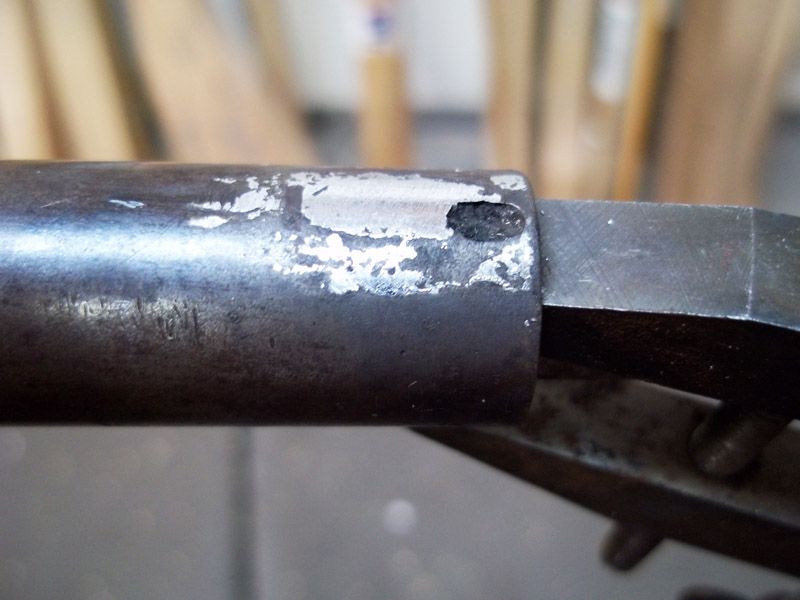BCarp
40 Cal.
- Joined
- Oct 30, 2004
- Messages
- 233
- Reaction score
- 137
Recently acquired English fowling piece, 16 bore, 37" bbl, iron furniture:

Full picture album here:
http://smg.photobucket.com/user/BCarp/library/English Fowler
Original flint or well-done re-conversion? The lock is marked "I. Field" and has a roller frizzen and toggle-link between mainspring and tumbler. The cock looks shinier, so maybe a replacement?
Barrel is oct.-to-rnd, damascus steel, marked "TWISTED" and "STUBB" or "STUBS" on underside, with proof-marks crown-over-P and crown-over-V. No vent liner. The touch-hole is drilled directly into the bbl.
Walnut stock with checkered wrist, and horn nose-cap on forearm. No cheek piece.
The name "W. NORTH" is stamped on the gun in three places: butt-stock behind wrist, behind lock bolt (upside-down!), and on wrist escutcheon. An owner's name?
Wooden rammer with no outer tip, has iron tow worm affixed to inner tip.
Looks like, from the indent, it originally had a bead sight. Sloppily soldered blade sight replacement.
Very light (just over 6 lbs) and well-balanced. Nice bore with light surface rust but no pitting.
Please discuss...! :hmm:

Full picture album here:
http://smg.photobucket.com/user/BCarp/library/English Fowler
Original flint or well-done re-conversion? The lock is marked "I. Field" and has a roller frizzen and toggle-link between mainspring and tumbler. The cock looks shinier, so maybe a replacement?
Barrel is oct.-to-rnd, damascus steel, marked "TWISTED" and "STUBB" or "STUBS" on underside, with proof-marks crown-over-P and crown-over-V. No vent liner. The touch-hole is drilled directly into the bbl.
Walnut stock with checkered wrist, and horn nose-cap on forearm. No cheek piece.
The name "W. NORTH" is stamped on the gun in three places: butt-stock behind wrist, behind lock bolt (upside-down!), and on wrist escutcheon. An owner's name?
Wooden rammer with no outer tip, has iron tow worm affixed to inner tip.
Looks like, from the indent, it originally had a bead sight. Sloppily soldered blade sight replacement.
Very light (just over 6 lbs) and well-balanced. Nice bore with light surface rust but no pitting.
Please discuss...! :hmm:
Last edited by a moderator:









